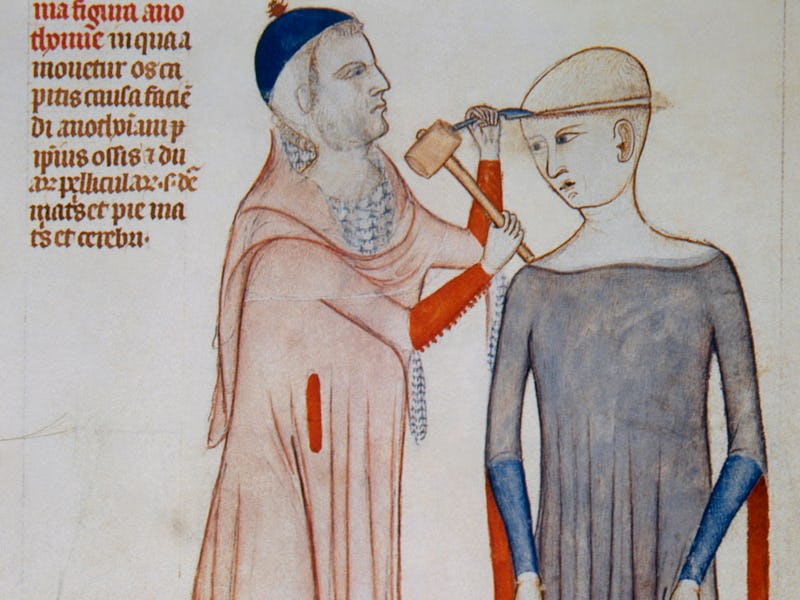5,300 years ago, a woman received the first-known ear surgery — it was way more gnarly than you think
How did she survive this?

The history of medicine is disgusting. In neolithic times, people drilled holes into their skulls as part of an ancient process called trepanation. Some cultures believed that a hole in your cranium could rid the body of evil spirits. The practice remained part of medical regimens across the world for thousands of years.
But aside from trepaning, we know very little about when and how humans performed the first surgeries for purely medicinal purposes — to relieve pain and save lives.
The discovery — In a new study in Scientific Reports, researchers describe an ancient skull found in modern-day Spain that bears the aftermath of grisly ear surgery. It is the oldest example of this type of surgery on record and gives weight to the idea that skilled operations began long before humans wrote down the details.
The skull once belonged to a woman who lived 5,300 years ago in the Dolmen of El Pendón, a neolithic site in Northern Spain. Analysis shows that she was over the age of 50 at the time of her death.
On both sides of her skull, there are marks that indicate someone cut into her mastoid bones, which sit just behind the ears. Mastoid bones contain small pockets called air cells and these can become inflamed after a middle-ear infection. It’s unclear exactly what illness plagued this ancient woman, but it must have been painful and serious enough to warrant surgery. Two separate surgeries, to be exact.
An image from the study shows the skull.
To withstand the pain, the researchers say, she would have had to have been restrained or given some sort of numbing drug. We know from other research that ancient humans used natural antibiotics and analgesics found in plants — so the latter scenario is not all that unlikely.
Her skull shows the bones had healed at the time of death and no ongoing infection. Therefore, the researchers believe that she survived well into old age, bearing the scars of a successful procedure.
“The significance of the finding is that for the first time we have been able to show that the surgery was successful and the elderly woman survived the operation,” study co-author Manuel Rojo-Guerra tells Inverse.
More detailed images of the skulls’ ear canals and the marks of surgery.
Why it matters — The researchers believe that this procedure was an early mastoidectomy — a type of surgery first described in writing in the 17th century. These surgeries were lifesaving procedures in a world with no antibiotics, designed to remove infection by force. These days, mastoidectomies are rare — today, most people take antibiotics to treat an ear infection.
Early humans and our ancestral cousins were prone to ear infections. Ancient skulls tend to show signs of cholesteatomas or cysts that typically grow in the middle ear and spread to the eardrum. Left untreated, the cysts can cause vertigo and even hearing loss. There’s even a hypothesis that chronic ear infections wiped out Neanderthals.
What this new research shows is that our species could perform a skilled procedure to save themselves the agony of an ear infection and live to tell the tale.
A skull discovered in Mexico that shows evidence of trepaning.
Unanswered questions — The reason why humans began to operate on each other is still unclear, Rojo-Guerra says. But surgeries like this — while painful, and life-threatening in and of themselves — could dramatically improve a person’s quality of life and keep them alive for longer.
And even though we know that in some ancient cultures, trepanation was a spiritual practice, Rojo-Guerra believes this skull, in particular, was not operated on for that reason.
“I think it is purely a therapeutic issue,” he explains.
He’s also convinced that the precision of this procedure had to have been conducted by someone with experience, such as a skilled healer.
“It is not credible that someone would undertake this type of surgery without any prior knowledge or experience,” he says.
The intention — and the success — of this ancient surgery leaves a tantalizing medical mystery for researchers to dig into further. Today, this procedure would be classed as a simple surgery — but now we know its roots extend far further back in time than we originally thought.